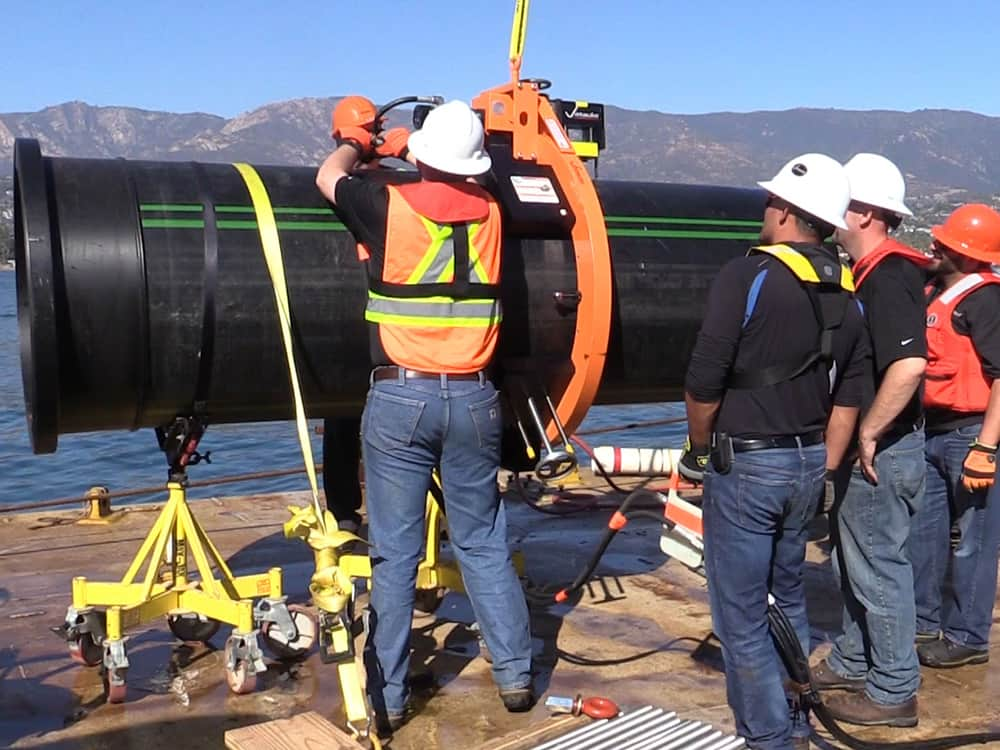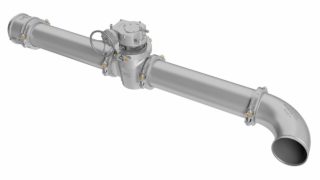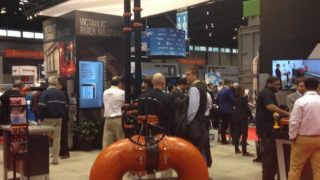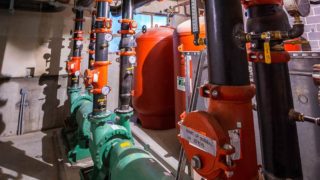Posted on January 12, 2018
Victaulic Tackles Extreme Condition in the Subsea to Help Bring Santa Barbara Desalination Facility Back Online in Record Time
- Innovative Solution Solves Challenge of Missing Subsea Pipe 2,500 Feet Offshore and 50 Feet Underwater
- Facility Now Supplies 30% of the City’s Water Supply Demand
Against the backdrop of severe drought conditions across California, the city of Santa Barbara faced an extreme challenge: how to bring its Charles E. Meyer Desalination Plant back online after nearly two decades in standby mode, against a tight timeline along with budget and environmental constraints.
The project was further complicated by the discovery that an eight-foot section of the 36-inch subsea intake line, located 2,500 feet from the shore and under 50 feet of water, was missing. The pipe was removed when the plant was placed in standby mode in 1992.
With the intake pipe in need of repair before the project could proceed, the clock was ticking with the team having just six weeks to find a solution.
Engineers and contractors first considered installing an unrestrained non-Victaulic coupling to rejoin the missing section, which would require anchoring it to the ocean floor to restrain the pulling forces created by the 80 pounds per square inch (PSI) underwater pumps. However, they decided against this approach because it would require concrete thrust blocks to be poured underwater in an environmentally sensitive area, which would add several weeks to the already tight schedule.
Experts turned to Victaulic for an ingenious solution: a grooved high density-polyethylene (HDPE) pipe with a specialized Style 908 coupling specifically designed to quickly join HDPE pipe and eliminate the need for fusing.
Until then, not many engineers had used a grooved HDPE pipe for abrasive intakes, especially at desalination plants, given the corrosive nature of abrasive on metal used in traditional joining methods. The Victaulic approach promised an ideal solution for the extreme, underwater environment. The products offered extreme durability – rugged enough to withstand the physically demanding operating conditions including corrosion risk. The products provided reliability for the life of the system, in this case 100 years. The benefits of greater durability and reliability were all gained while dramatically speeding installation times, an approach that was 10 times faster than other the alternative fusion weld.
Retrofitting a Power Unit to Support Underwater Pipe Grooving
To complete the entire installation underwater, Victaulic needed to repurpose its cut grooving (CG) tool so it could groove the pipe end after being submerged. Traditional Victaulic CG tools require electricity and electric motors to run, posing a significant challenge for the team since their target was 50 feet underwater. Victaulic retrofitted a CG3500 tool to run on a hydraulic motor with a hydraulic power unit located on top of the barge, making it the preferred choice to cut and groove the subsea pipes. Once they knew the CG3500 would operate and function properly underwater, Victaulic made additional enhancements to protect the tool from corrosive saltwater before commissioning it to complete the task.
Overcoming the Challenges of Aligning Pipe Ends in Strong Ocean Currents
The next hurdle was the strong ocean currents. With currents pulling the pipe ends in different directions, experts knew aligning the pipe ends for coupling installation would be extremely difficult. The self-aligning Style 908 coupling provided a quick and unique solution to this issue, allowing a diver to insert the two pipe ends into the coupling, tighten the nuts until the housings were bolt pad to bolt pad and have confidence that the coupling was properly installed. These currents also posed a threat to the stability of the installed pipeline. To ensure the pipe would remain intact and without the need for maintenance, Victaulic assembled the coupling using super duplex internal stiffeners in order to reinforce the pipe end.
Withstanding 100 Years of Exposure to Corrosive Seawater
In the final stages of planning and development, Victaulic and its engineering partners had to be sure the equipment would maintain its strength and durability after being exposed to corrosive seawater. To ensure the Style 908 coupling could withstand 100 years of underwater service life, the coupling housings were coated with fusion bonded epoxy to eliminate the risk of corrosion and 50-pound zinc anodes were affixed to the housing bodies to provide the necessary cathodic protection.
Total Installation Time: Two Hours
After several days of training and preparations aboard the barge, it was time for action.
One diver accompanied the CG3500 from the barge to the ocean floor. The pipe was grooved successfully in 90 short minutes. The coupling was installed within 30 minutes, with a total installation time of two hours.
Now operational, the facility has the capacity to produce three million gallons per day. This is equivalent to 3,125 acre-feet of water annually, or about 30 percent of the city’s water supply needs.
The project provides another example of why Victaulic is the partner of choice in extreme conditions: proving that an HDPE pipeline can be fully prepped and installed in subsea environments in record time.
To learn more about the products used, click here.



